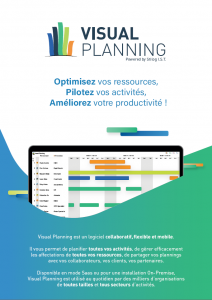Technology has fundamentally and permanently changed customer expectations of how brands should present themselves, engage with the public, and provide customer service.
The ‘now’ economy has evolved from an abundance of readily-available information, quick access, and a host of products and services on demand. A disconnect develops and grows between the brand and the customer when field service organizations have limited contact with the public outside of the technicians in the field.
Especially when those customers are used to the always-available kinds of customer service they get from many B2C brands using omnichannel customer service strategies.
From the perspective of the organization it may seem like there’s no issue. But silence or a lack of complaint from the customer isn’t necessarily an indicator of a happy customer. Research from Capgemini found that 79% of utility companies strongly believed they provided a customer-centric approach to their services. Unfortunately, only 7% of consumers shared that view.
Where many organizations fall short is providing customer service at the field level and optimizing field service, so the brand’s customer-centric focus actually makes it to the customer.
Field service providers who make the effort to improve satisfaction will see the results in their bottom line.
According to McKinsey, improving customer satisfaction can lift revenue by 15% while lowering the cost of servicing customers by as much as 20%.
Your field service technicians are representatives of your brand. For most customers, it’s the only interaction they have outside of limited interaction via digital channels like email, or outbound IVR campaigns.
With limited exposure to your brand your customers expect the same kind of service and response they could get from any other customer service agent.
The customer experience will deteriorate when field service agents can’t provide more than vague details, lack information to answer a customer’s questions, and continue to operate within wide service windows.
In the age of big data and the Internet of Things (IoT) there’s a lot you can do to empower field service technicians. So they can provide better customer support on site, improve customer delight, and deliver a boost in customer retention.
There’s also operational considerations to optimize field service for a better customer experience. Here’s 7 methods you can start implementing today to optimize customer service in the field, drive retention, and boost growth.

1. SHIFT FOCUS AWAY FROM SPEED OF TICKET CLOSURE
At an operational level, the data can be misleading. If one of your KPIs is tracking the volume of completed jobs it might look great when technicians are rapidly handling customer fixes and moving quickly from site to site.
Customers might not feel the same way if quality of work is sacrificed for speed and efficiency.
Committing multiple follow up calls to a customer’s problem that should have been fixed on the first visit aggravates customers and wastes and incredible amount of time and resources. It also takes field service techs away from other calls where they’re needed.
Instead of being reactive to calls and focusing on speed of completion, focus on quality fixes and preventing future service failures. This can prolong time-on-site for technicians, but it dramatically improves customer satisfaction when they don’t have to suffer downtime and frustration from repeat incidents.

2. IMPROVE RESPONSE AND SERVICE TIMES
There are two ways to reduce the amount of time a technician spends on site with a customer without sacrificing quality of work. First, leveraging predictive analytics for better deployment of technicians. Secondly arming technicians with tools and resources.
Through predictive analytics, it’s possible for your company to identify the skillsets needed for a particular job. This data can be applied to automatically (or expeditiously) route technicians to the most suitable tasks.
Giving your technicians access to more data and resources will dramatically reduce time-to-completion for customer issues. For example; in the industrial and manufacturing sector organizations are now using asset intelligence networks to maintain comprehensive digital records on parts, service, and support issues. When a technician is on-site, they can access the asset network to view diagrams, 3D models, part information, service and repair instructions, troubleshooting information and more.
Your customers get fast, efficient, and effective field service when the right technicians are deployed to a job site faster. They’re armed with all the knowledge and data they need to apply the right fix the first time around.

3. INVEST IN PREDICTIVE MAINTENANCE
Frustration can build quickly when customers have to interrupt their day or shut down a workflow in order to place a trouble call and wait for field service.
Rather than rely on a reactive service model, build in remote monitoring and predictive maintenance to improve customer satisfaction by leveraging always-connected devices with machine-learning software.
With remote monitoring your organization can process a wealth of data from equipment on-site to ensure that everything is operating within established parameters. When potential faults are identified you can deploy the right technician before a complete failure occurs.
Predictive maintenance can reduce the cost and the time it takes to complete a repair. This can improve first-time fix rates, and avoid major interruptions that could damage the customer relationship.
Alaska’s Department of Transportation utilizes this kind of technology with Microsoft Azure to rapidly analyze weather conditions and make better on-the-ground decisions about crew deployment. Through the use of predictive maintenance and monitoring Alaska is not only reducing the cost of road maintenance. They’re creating safer conditions for citizens and saving lives.

4. IMPROVE RESPONSE TIMES
Today’s customers have been conditioned to expect faster response times, and 73% of consumers say valuing their time is one of the most important things a company can do to provide excellent service.
Work to improve the deployment of technicians to get them on-site faster.
A report from Aberdeen on field service optimization found that among the 160 field service organizations assessed there were a confluence of factors directly impacting service costs and the customer experience, but companies Aberdeen surveyed indicated that customer preference for service time is the most important factor for determining optimal work order allocation.
According to Aberdeen, the most successful organizations with the highest customer satisfaction were 72% more likely to utilize visual planning and collaboration tools including visual route planning and visual dispatch management to improve response times.

5. IMPROVE EFFICIENCY OF FIELD SERVICE CALL CENTERS
Optimizing customer service within your call center should also be a priority.
By leveraging data and analytics, your customer service team will benefit from prescriptive modeling and advice to help power decisions, streamline service, and get service calls dispatched far more quickly so customers spend less time in chat or on the phone.
For example, prescriptive advice based on data can establish the appropriate steps for agents to route trouble calls. It can prescribe changes to agent and technician schedules, improve forecasting and routing or, escalating customer calls based on necessary skill requirements and behavior data.
Other methods to improve call center efficiency include:
- Live call monitoring for targeted coaching to improve agent response
- Continuous improvement training based on data and feedback from field technicians
- Inter-agent chat and direct-line communications with field technicians
- Skill-based call routing rules
Don’t ignore the benefits of machine learning and AI for improving the handling of inbound customer query. 80% of executives feel AI improves worker performance in call center environments.
Implementing automated tech and chat bots can speed the support process, and today’s customers don’t mind working with AI. According to HubSpot, 40% of customers don’t care who answers their query, as long as the issue gets resolved.

6. PROVIDE A KNOWLEDGE BASE FOR SELF-HELP
A 2015 study from Forrester Research found that web and mobile self-service interactions exceeded interactions over live-assist channels (phone and live chat).
There is a growing demand among knowledgeable customers who desire options for self-service. Data shared by Zendesk revealed that a whopping 91% of customers say they would use a knowledge base to self-service if it met their needs.
As a service provider you should put resources in place to support those customers willing to self-diagnose and address fixes without the need for a field service technician.
Removing those types of customers from the support queue:
- Decreases the load on your call center
- Reduces the overall number of field service calls
- Eliminates deployment of technicians to simple calls (reducing operational and travel costs)
- Improves customer satisfaction by reducing downtime for simple issues
The easiest approach is to populate a customer-facing knowledge base with easy-to-follow diagnostic and self-help guides covering the most common issues. This living database can continually grow by leveraging real-time data exchanges between customers, your call center, and your field crews.

7. INVEST IN SCALABLE TECHNOLOGY
A major hindrance to customer service in the field is the reliance on outdated processes and technology. For example, there’s little a field technician can do to keep a customer informed if the scope of their tech on hand is a clipboard, printed work orders, a pager and the phone numbers to dispatch and/or customer service.
Investing in scalable technology that grows with your organization empowers field technicians and provides them with all the resources they need such as:
- Access to digital resources for diagnosis and repair to improve first time fix rates
- Access to customer data and reporting to keep customers in the know
- Tools to update and manage invoicing data for more accurate accounting
- Detailed information on service contracts
- Direct access to other agents and support crews for collaborative field repairs
- Visual GPS to get techs on site faster
- Faster electronic processing of work orders
All of which result in faster and more accurate handling of customer accounts leading to elevated customer service and improved customer retention.
CONCLUSION
The key to retaining customers and revenue growth for field service organizations depends mainly on accurate response times. It depends personalized support too for independent customers, leveraging scalable technology for improved field service and significant focus in first-time fixes to avoid repeat truck deployment. Each of the recommendations above is a customer-centric approach to operational improvement, with investments guaranteed to enhance the customer experience.




